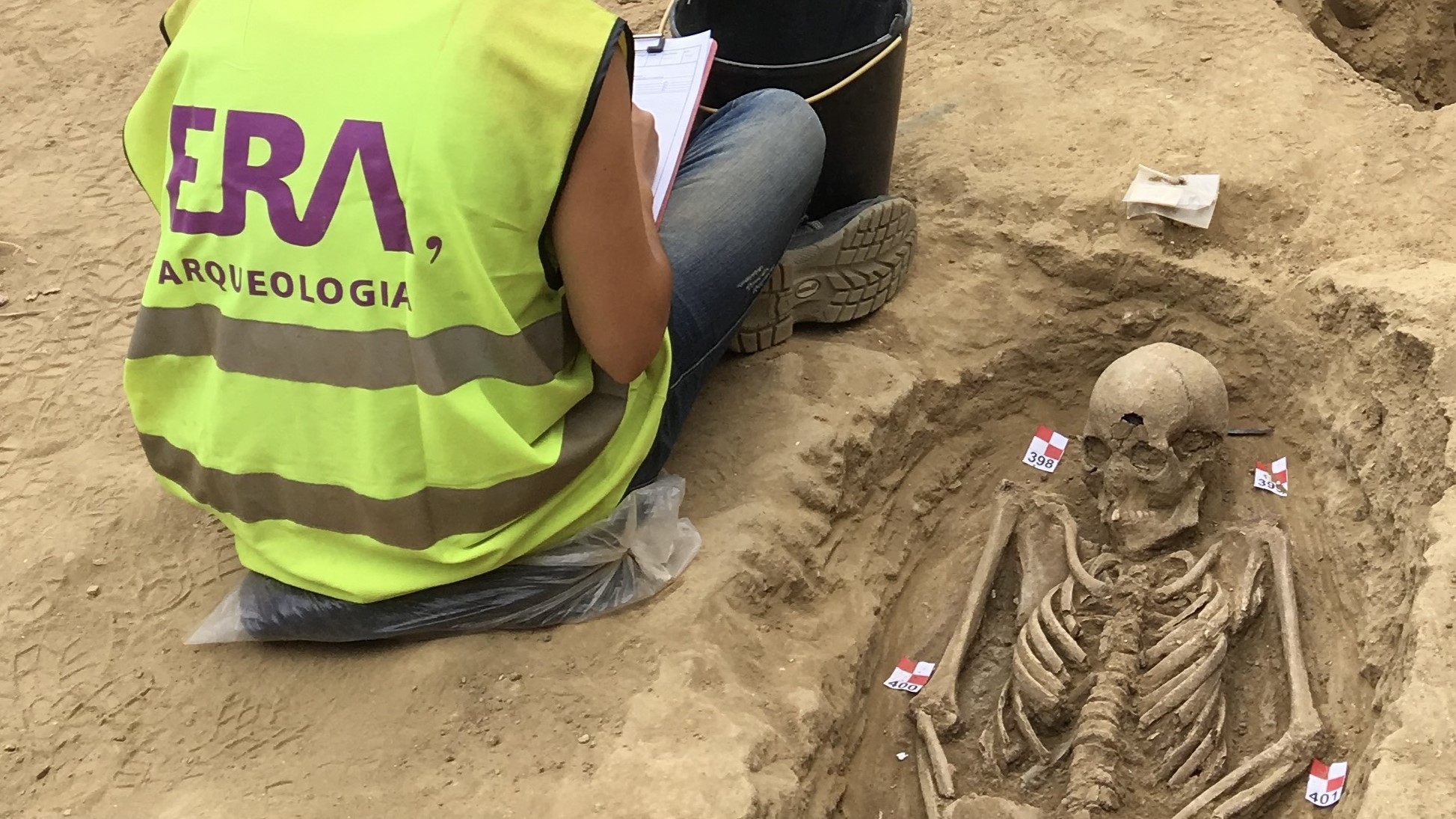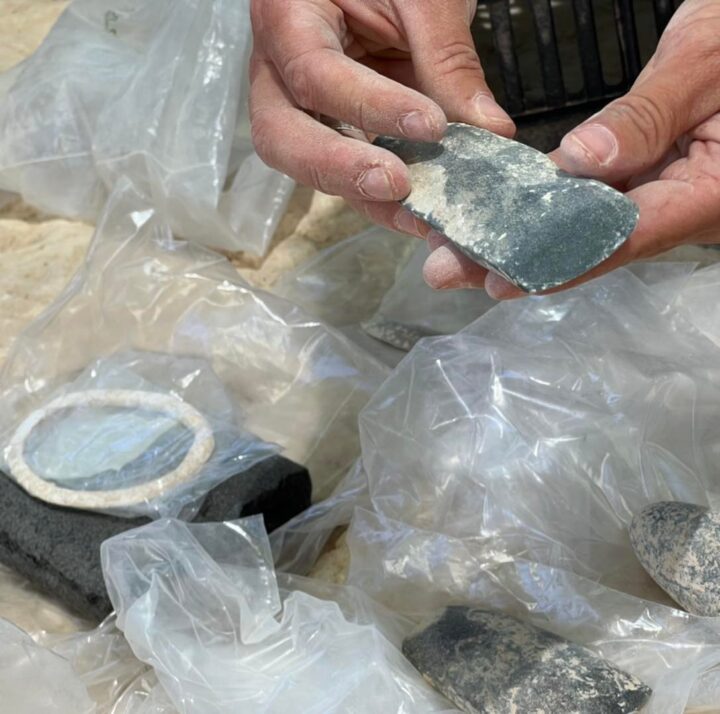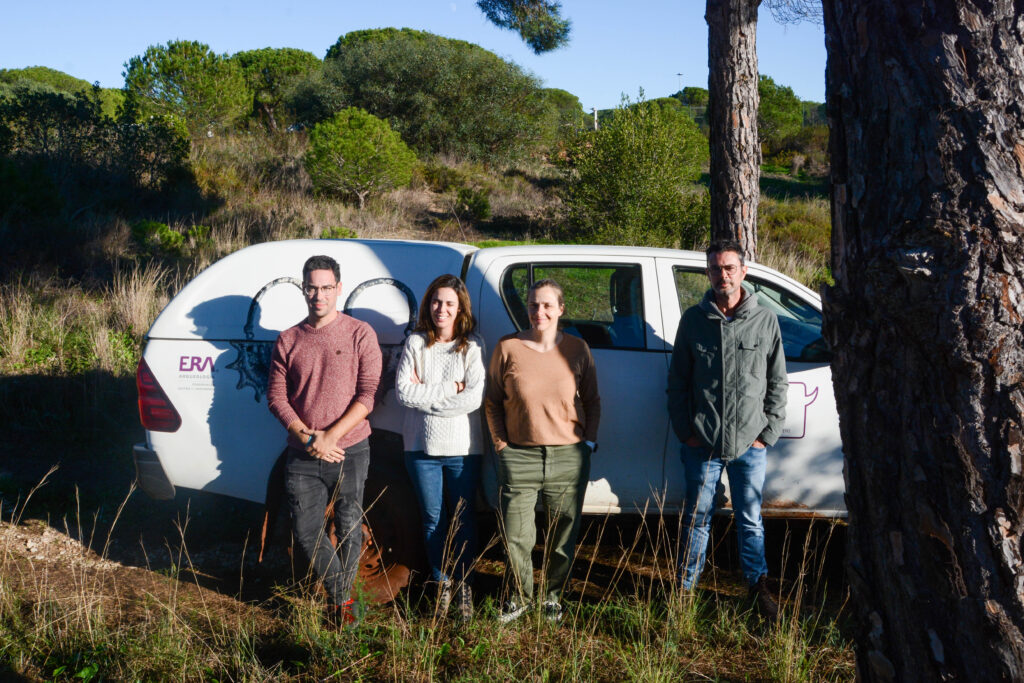It was born in 1997, at a time when «archaeology was beginning to professionalize», «in the Alqueva phase and when greater demands were beginning to emerge in these areas». From the beginning, ERA Arqueologia worked across the country, but in 2019, «given the number of requests», it was justified to open a delegation in the Algarve, where 384 projects have already been carried out.
«Given the amount of work that existed and what seemed to us to be the potential for providing archeology services in the Algarve, we, very early on, started thinking about having a structure dedicated to the region to respond to needs», he explains. in an interview with Sul Informação Miguel Lago, founding partner of ERA Arqueologia, of which he is the managing director and responsible for the Project Area.
Here, the team is made up of Eliana Correia, Rita Dias and Francisco Correia, who emphasizes that, «from one year to the next, ERA's projects in the Algarve have always gone up».
«In 2019, there were already projects awarded, in 2020, marked by the pandemic, we managed to double the number of projects, there was not much impact in our area, and, for 2021, we quadrupled the number of projects. Every year, we have approximately 40 proposals awarded for the Algarve and, since this delegation was created, we have already had 130», continues the archaeologist.
At the ERA office in Faro, located in one of the UAlg Tec Start offices on the Gambelas Campus of the University of Algarve, there is a table full of ongoing, future and other already completed projects, from one end of the Algarve to the other.
As Miguel Lago states, a permanent team of three people is currently «short for the needs we have» and that is why, in larger projects, it is necessary to hire «people from outside».
27 years ago, when ERA was born, various requests for archaeological work also began to appear. Why?
«The mid-90s is when there is a change in these issues that have to do with territorial planning, environmental impacts... and archeology is very much in the wake of all these assessment instruments, definition of measures that have to be applied and then execution of these measures: whether in the environment or in heritage», says Miguel Lago.
«There was a lot that went by the wayside, works that were done without any type of archaeological work, there was no rigorous definition of why there was archeology or not. The first projects in which archeology was required were large public works projects, such as, for example, Alqueva, where the heritage component was already incorporated», he continues.

In your interview with Sul Informação, this official also explains that «today, archeology exists, essentially, for three reasons».
«One that has to do with research, which is an archeology that emerges a lot from universities. Then we have the Municipalities, which have some archeology projects, somewhat linked to the musealization of sites (…), and then there is the other, which is the overwhelming archeology that is practiced in Portugal, which is an archeology carried out with the purpose of studies of environmental impact, or for reasons related to the municipalities' own PDM, which define certain areas of historical or archaeological sensitivity, which presuppose intervention».
The Jerumenha Fortress, in Elvas, the Islamic Baths, in Loulé, the Pestana Group Golf Courses, in Lagoa, or the Perdigões Archaeological Complex, in Reguengos de Monsaraz, where they have worked since the founding of ERA and which It is now a national monument, are some of the works that the team uses to exemplify how project complexity and time changes from place to place.
Regarding motivation, they make no secret of the fact that «the more interesting the projects are from a heritage point of view», the more captivating they will be for an archaeologist.
«I think that, at a national level, the oldest archaeological research project taking place in a systematic and continuous manner, with a lot of research, international recognition, many entities involved in the field of research, several foreign universities, Portuguese, funding from various places, is the Perdigões Archaeological Complex», says Miguel Lago.
In the Algarve, according to the team, one of the places where they work the most is Silves and, on the other hand, São Brás de Alportel or Olhão are among those with the least archaeological work.
«This also depends on how attentive the Chambers are to these topics and the mapping of archaeological sites already carried out», reiterates Miguel Lago.
However, he warns:
«People need to understand that this mapping of archaeological sites at municipal or national level is something that has never been done. There are always new archaeological sites being created by the experience of humans in the territory. On the other hand, what we know about archaeological remains left in the past depends on our ability to identify them. There are many things that we don't identify because we haven't been there, because they are buried, because they can't be seen, therefore, what we know is always, in some way, depending on the place, the tip of the iceberg».

It was, in fact, these conditions that led ERA’s Algarve team to create the project “Odyssey Sensing Project“, with the aim of «strengthening research, technological development and innovation».
It is a project developed by a consortium led by ERA Arqueologia, in partnership with the Universities of Aveiro and Maia, co-financed by CRESC Algarve 2020, Portugal 2020 and FEDER.
«It is a very important project, because it allows us to make a big leap in the identification, characterization and delimitation of sites. Then, it is also very important in terms of territorial management, because, when we do not know archaeological sites well, we may be conditioning, for example, the use of territories, land, by private owners, without understanding very well why it is that he is being conditioned», explains the administrator.
According to Rita Dias, the project is already being developed across the country and even internationally.
«This project has progressed to a certain point, we have achieved most of the objectives, but we are already thinking about continuity, because we have come to the conclusion that more scientific research is needed», continues the archaeologist.
Four years after being established in the Algarve, ERA archeology considers this delegation to be “essential”.
«The logic of ERA has a lot to do with this creation of different regionalized hubs that allow us to create proximity to the problems of different regions. And, on the other hand, it allows for a tendency towards specialization and retention of the professionals themselves. If we only have a team in Lisbon and work across the country, we won't actually create roots in places and we won't help solve problems in the same way», considers Miguel Lago.
Installed in Lisbon, Porto, Faro, Sines, Évora and Madeira, Miguel Lago does not fail to consider that «the work of an archaeologist goes largely unnoticed», but, in his opinion, this is also due to the fact that «they communicate little and poorly».
«It all starts with the protection of Heritage, which could communicate much more. If we have, perhaps, a thousand archaeological licenses or more throughout the year, it is absurd how the authority does not disclose this publicly, does not, for example, send a monthly or quarterly newsletter to the media, whatever. The Ministry of Culture itself, which supervises, licenses, supervises and approves the work, does not even have the capacity to properly publicize all this immense archaeological activity», he points out.
To combat this situation, the founding partner of ERA Arqueologia emphasizes that the company has made an effort to change the paradigm, through the dissemination of various works on the company's social networks, thus trying to reach «both the scientific community and the common citizen».
«The result of many of the works that are carried out could be summarized as submitting a report to the guardianship of the heritage and to the client and that’s it! But we, often, given the importance of the things that result from this, seek to develop complementary projects, we continue research, and we have a specific area of research in the area", he concludes, reinforcing that, in this area, it is often necessary to "go further in addition".



















Comments